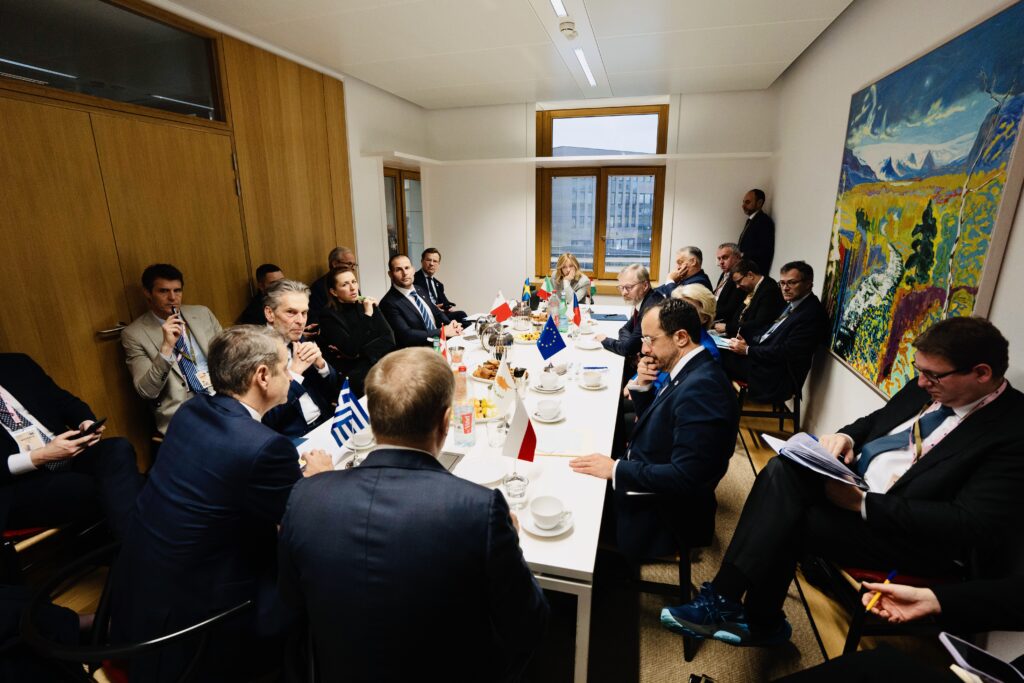Brussels – The Italian view on migration is back in the news in Brussels. On the sidelines of the European Council, Prime Minister Giorgia Meloni, along with Danish Prime Minister Mette Frederiksen and Dutchman Dick Schoof, promoted an informal meeting to talk about innovative migration solutions.
The Italy-Albania protocol, external hotspots, and a strengthening of the legal framework on returns (on which Italy received two stops between October and November) involved not only the three organizers but also the European Commission itself.

In addition to the four countries, also leaders from Cyprus, Greece, Malta, the Czech Republic, Poland, Sweden, and, no surprises, Hungary attended the meeting.
Von der Leyen, again with no surprise, has now made herself an institutional champion of Meloni’s hard line. The message had already come through loud and clear in the letter sent to leaders before the European Council, in which she had spoken extensively about migration. The preparation of the new Pact on Migration and Asylum, in the letter, is proceeding apace in the run-up to mid-2026. In this regard, during the meeting with leaders, the Commission president focused on a proposed new legal returns framework that the Commission intends to present in early 2025.
Meloni defends her Protocol and brings the focus back to the relevance of innovative solutions to counter irregular migration. The aim is to break the chain of human trafficking and, at the same time, allow European reception to focus on those entitled to international protection.
Clarity and effectiveness are the crucial words for leaders in the new EU regulatory framework. On the part of the EU countries involved by Meloni in the meeting, a new definition of the concepts of safe country of origin and safe third country should support the ‘new proposals,’ starting with the Italy-Albania model and the possible creation of ‘return hubs’ in third countries.
It is worth noting that the issue of defining ‘safe countries’ has hindered the Italian government in the application of the Italy-Albania Protocol. The two recent rejections of the application of the agreement were primarily due to the divergence between the definition of Italian jurisprudence and the government, which, according to the judges, conflicts with EU law. In this sense, the rulings from the EU Court of Justice should clarify the issue.
Meanwhile, the leaders discuss how to facilitate their own projects, also involving the need to strengthen EU action along migration routes with UNHCR (UN Refugee Agency) and IOM (International Organization for Migration) regarding assisted voluntary returns.
The migration issue is a driving force for Italy, which increasingly feels like a protagonist in European politics, as the premier likes. The von der Leyen stance — expressed both in the letter and in the operational tone of the migration conclusions approved at today’s European Council — has also been appreciated. European migration policy can count on a group of leaders who share a vision and a center of gravity of the debate that has shifted increasingly to the right, which, however, seems to garner the approval of EU member states.
English version by the Translation Service of Withub

![Il presidente della Repubblica, Sergio Mattarella, con la presidente della Commissione europea, Ursula von der Leyen [Bruxelles, 21 maggio 2025. Foto: Emanuele Bonini per Eunews]](https://www.eunews.it/wp-content/uploads/2025/05/mattarella-vdl-350x250.png)







